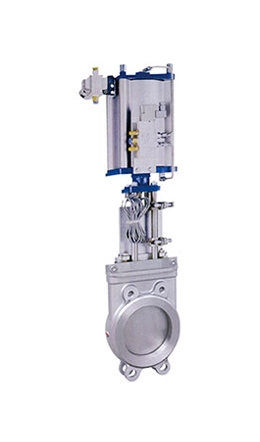Wafer check valves use a swinging disc to allow or block flow. Their design allows them to be fitted in extremely tight spaces – where the flanged check valve cannot be used. The wafer check valves have molded bodies around the area where the disc opens up. This is the most important difference between the above two types of valve. KFTE Wafer Check Valves are designed and manufactured strictly to International Standards API 6D, API 594, ASME B16.34 or Equivalent. Pressure Ratings from Class 150 to Class 2500, PN16 to PN420. Sizes Ranges from 1/2" thru 60". Ends Connections in Flanged R.F or RTJ, Wafer, Fully Lugged and Grooved.


Wafer check valves are compact, flange-mounted valves designed to prevent backflow in pipelines. They come in various types based on design, mechanism, and application.
1. Dual-Plate/Double-Door Wafer Check Valve
Design: Features two hinged semi-circular discs that fold open with flow and snap shut when flow stops.
Advantages: Lightweight, space-saving, and quick closure reduces water hammer risk.
Applications: Common in water supply, HVAC, and low-to-medium pressure systems.
2. Spring-Loaded Wafer Check Valve
Design: Uses a spring-assisted disc (single or dual) to ensure rapid closure, even with fluctuating flow.
Subtypes:
Silent/Non-Slam: Prevents slamming noise by closing before flow reversal.
High-Pressure: Reinforced design for systems with high pressure or rapid pressure changes.
Applications: Ideal for vertical pipelines, steam systems, and industries requiring quiet operation.
3. Nozzle Wafer Check Valve
Design: Streamlined body with a nozzle-shaped inlet to minimize turbulence and pressure drop.
Advantages: Efficient flow with reduced resistance.
Applications: Used in chemical processing, power plants, and high-flow systems.
4. Conduit Wafer Check Valve
Design: Complies with UL standards for fire protection systems. Often includes a rubber seat for tight sealing.
Applications: Fire sprinkler systems and other safety-critical fluid control.
5. Single-Disc Wafer Check Valve
Design: A single disc pivots on a hinge or central pin, closing with gravity or backflow.
Advantages: Simple design, cost-effective.
Applications: Low-pressure water and wastewater systems.
6. Lift Wafer Check Valve
Design: A piston-like disc lifts vertically with flow and seats tightly when flow stops. Less common in wafer form.
Applications: Suitable for high-pressure oil/gas or steam systems where tight sealing is critical.
7. Wafer Tilting Disc Check Valve
Tilting Disc Structure: The valve features a disc that tilts on a hinge or pivot point, opening with forward flow and closing under gravity or spring assistance when flow reverses.
Compact Wafer Design: Unlike traditional swing check valves, it is lightweight and designed to fit between flanges without requiring additional bolts or space.
Spring-Assisted Closure: Some models include springs to ensure rapid, non-slam closure, reducing water hammer risk.
Wafer check valves are widely favored in fluid control systems due to their unique design and functional benefits.
1. Compact and Lightweight Design
Space-Saving: Their slim profile fits tightly between flanges, ideal for systems with limited space (e.g., HVAC, tight pipe runs).
Reduced Weight: Less material use lowers shipping/installation costs compared to bulky swing or lift check valves.
2. Cost-Effective
Lower Material Costs: Simplified construction requires fewer components.
Easy Installation: No need for extra bolts or supports—simply clamp between existing flanges.
3. Quick Closure Mechanism
Prevents Water Hammer: Rapid disc closure (gravity- or spring-assisted) minimizes pressure surges and pipe damage.
Non-Slam Options: Spring-loaded designs ensure silent, gradual shutoff in vertical or variable-flow systems.
4. Versatility
Broad Applications: Suitable for water, steam, oil, gas, and corrosive fluids.
Material Flexibility: Available in stainless steel, cast iron, PVC, and alloys for diverse environments (e.g., chemical plants, marine systems).
5. Low Maintenance
Fewer Moving Parts: Hinged disc or dual-plate designs reduce wear and failure points.
Durable Sealing: Resilient seats (elastomer or metal) ensure long-term leak prevention.
6. Minimal Pressure Drop
Efficient Flow: Streamlined internal design (e.g., dual plates, tilting disc) reduces flow resistance, saving energy in high-flow systems.
